Potřebujeme váš souhlas k využití jednotlivých dat, aby se vám mimo jiné mohly ukazovat informace týkající se vašich zájmů. Souhlas udělíte kliknutím na tlačítko „OK“.
ASTM C1468-13
Standard Test Method for Transthickness Tensile Strength of Continuous Fiber-Reinforced Advanced Ceramics at Ambient Temperature
Automaticky přeložený název:
Standardní zkušební metoda pro Transthickness pevnosti v tahu neustálého vyztužených vlákny pokročilé keramiky při pokojové teplotě
NORMA vydána dne 15.2.2013
Informace o normě:
Označení normy: ASTM C1468-13
Poznámka: NEPLATNÁ
Datum vydání normy: 15.2.2013
Kód zboží: NS-11408
Počet stran: 17
Přibližná hmotnost: 51 g (0.11 liber)
Země: Americká technická norma
Kategorie: Technické normy ASTM
Kategorie - podobné normy:
Anotace textu normy ASTM C1468-13 :
Keywords:
ceramic matrix composite, CFCC, transthickness tension, ICS Number Code 81.060.30 (Advanced ceramics)
Doplňující informace
| Significance and Use | ||||||||||||||||||||||||
|
4.1 This test method may be used for material development, material comparison, quality assurance, characterization, and design data generation. 4.2 Continuous fiber-reinforced ceramic matrix composites generally are characterized by fine grain sized (<50 μm) glass or ceramic matrices and ceramic fiber reinforcements. CFCCs are candidate materials for high-temperature structural applications requiring high degrees of corrosion and oxidation resistance, wear resistance, and inherent damage tolerance, that is, toughness. In addition, continuous fiber-reinforced glass (amorphous) matrix composites are candidate materials for similar but possibly less-demanding applications. Although shear test methods are used to evaluate shear interlaminar strength (τ4.3 CFCCs tested in a transthickness tensile test may fail from a single dominant flaw or from a cumulative damage process; therefore, the volume of material subjected to a uniform tensile stress for a single uniaxially-forceed transthickness tensile test may be a significant factor in determining the ultimate strength of CFCCs. The probabilistic nature of the strength distributions of the brittle matrices of CFCCs requires a sufficient number of test specimens at each testing condition for statistical analysis and design, with guidelines for test specimen size and sufficient numbers provided in this test method. Studies to determine the exact influence of test specimen volume on strength distributions for CFCCs have not been completed. It should be noted that strengths obtained using other recommended test specimens with different volumes and areas may vary due to these volume differences. 4.4 The results of transthickness tensile tests of test specimens fabricated to standardized dimensions from a particular material, or selected portions of a part, or both, may not totally represent the strength and deformation properties of the entire, full-size end product or its in-service behavior in different environments. 4.5 For quality control purposes, results derived from standardized transthickness tensile test specimens may be considered indicative of the response of the material from which they were taken for given primary processing conditions and post-processing heat treatments. 4.6 The strength of CFCCs is dependent on their inherent resistance to fracture, the presence of flaws, or damage accumulation processes, or a combination thereof. Analysis of fracture surfaces and fractography, though beyond the scope of this test method, is highly recommended. |
||||||||||||||||||||||||
| 1. Scope | ||||||||||||||||||||||||
|
1.1 This test method covers the determination of transthickness tensile strength under monotonic uniaxial forcing of continuous fiber-reinforced ceramics (CFCC) at ambient temperature. This test method addresses, but is not restricted to, various suggested test specimen geometries, test fixtures, data collection and reporting procedure. In general, round or square test specimens are tensile tested in the direction normal to the thickness by bonding appropriate hardware to the samples and performing the test. For a Cartesian coordinate system, the x-axis and the 1.2 This test method is intended primarily for use with all advanced ceramic matrix composites with continuous fiber reinforcement: unidirectional (1-D), bidirectional (2-D), woven, and tridirectional (3-D). In addition, this test method also may be used with glass (amorphous) matrix composites with 1-D, 2-D, and 3-D continuous fiber reinforcement. This test method does not address directly discontinuous fiber-reinforced, whisker-reinforced or particulate-reinforced ceramics, although the test methods detailed here may be equally applicable to these composites. It should be noted that 3-D architectures with a high volume fraction of fibers in the “z” direction may be difficult to test successfully. 1.3 Values are in accordance with the International System of Units (SI) and IEEE/ASTM SI 10. 1.4 This standard does not
purport to address all of the safety concerns, if any, associated
with its use. It is the responsibility of the user of this standard
to establish appropriate safety and health practices and determine
the applicability of regulatory limitations prior to use.
Standard Test Method for Measuring
Humidity with a Psychrometer (the Measurement of Wet- and Dry-Bulb
Temperatures) Standard Practice for Use of the Terms
Precision and Bias in ASTM Test Methods Standard Terminology for Composite
Materials Standard Test Method for Transthickness
Tensile Strength of Continuous Fiber-Reinforced Advanced Ceramics
at Ambient Temperature (Includes all amendments and changes
7/10/2019). Standard Test Method for Monotonic
Tensile Behavior of Continuous Fiber-Reinforced Advanced Ceramics
with Solid Rectangular Cross-Section Test Specimens at Ambient
Temperature Standard Practice for Verification of
Testing Frame and Specimen Alignment Under Tensile and Compressive
Axial Force Application Standard Terminology of Advanced
Ceramics Standard Practices for Force Calibration
and Verification of Testing Machines IEEE/ASTM SI 10 American National Standard for Use of the
International System of Units (SI): The Modern Metric System. Standard Practice for Conducting an
Interlaboratory Study to Determine the Precision of a Test
Method Standard Terminology Relating to Methods
of Mechanical Testing (Includes all amendments and changes
3/29/2023). Standard Practice for Reporting Uniaxial
Strength Data and Estimating Weibull Distribution Parameters for
Advanced Ceramics |
Podobné normy:
Historická
15.8.2014
Historická
1.6.2010
Historická
1.2.2011
Historická
1.12.2010
Historická
1.8.2013
Historická
15.2.2013
Doporučujeme:
EviZak - všechny zákony včetně jejich evidence na jednom místě
Poskytování aktuálních informací o legislativních předpisech vyhlášených ve Sbírce zákonů od roku 1945.
Aktualizace 2x v měsíci !
Chcete vědět více informací? Podívejte se na tuto stránku.


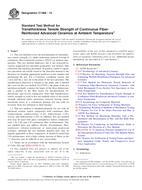
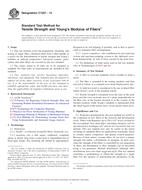 ASTM C1557-14
ASTM C1557-14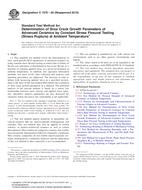 ASTM C1576-05(2010)..
ASTM C1576-05(2010)..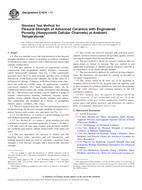 ASTM C1674-11
ASTM C1674-11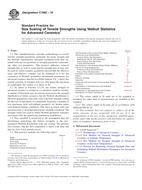 ASTM C1683-10
ASTM C1683-10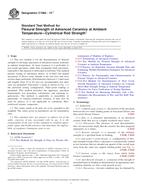 ASTM C1684-13e1
ASTM C1684-13e1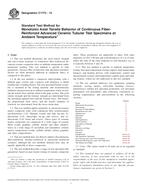 ASTM C1773-13
ASTM C1773-13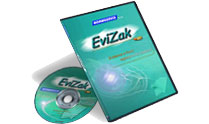
 Cookies
Cookies
